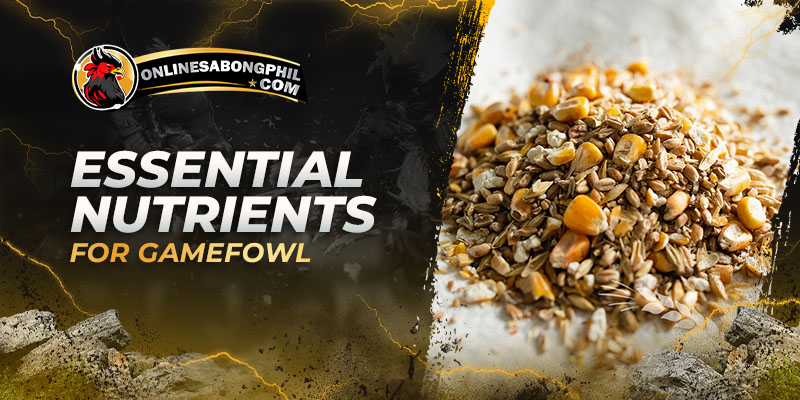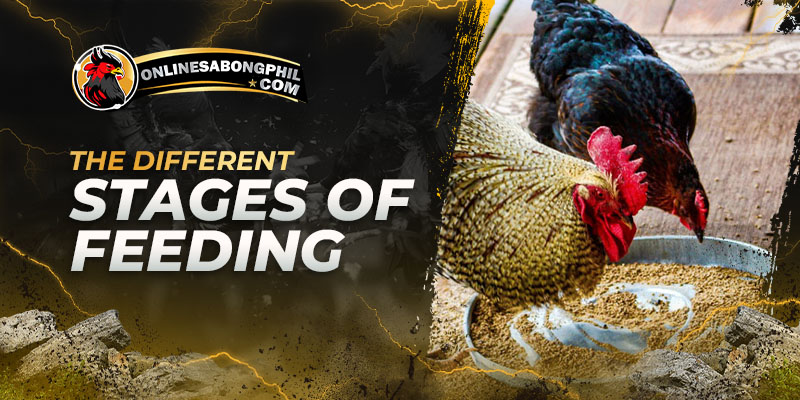Want your gamefowl to be champions? It all starts with the fuel they put in their bodies. Choosing the right feed is the key to unlocking their full potential – think strength, stamina, and that fighting spirit that sets them apart. This guide will show you exactly how to do that! We’ll crack open the secrets of gamefowl nutrition, from the essential ingredients to the perfect feed for every stage of their life. Get ready to transform your birds’ performance, one bite at a time!
Essential Nutrients for Gamefowl
Nutrition forms the cornerstone of gamefowl health and performance. A comprehensive understanding of their dietary needs is paramount.
- High Protein: Gamefowl needs high-quality protein (around 20-28%) for muscle development and repair. Look for animal protein sources like fish meal, meat and bone meal, and insects.
- Energy-Rich Carbohydrates: Grains like corn, oats, and wheat provide energy for training and fighting.
- Fats: Fats are essential for energy and vitamin absorption. Include healthy fats from sources like flaxseed or vegetable oils.
- Vitamins and Minerals: Vitamins (especially A, B complex, D, E) and minerals (calcium, phosphorus, etc.) support bone health, immune function, and overall well-being.
Natural Supplements:
- Garlic: Potential antibacterial and immune-boosting properties.
- Ginger: It may have anti-inflammatory and antioxidant effects.
- Probiotics: Support gut health and digestion.
The Different Stages of Feeding
Here’s the different stages of feeding gamefowl, including the purposes and considerations for each stage:
Conditioning:
- Emphasize protein (around 25%) and moderate carbohydrates to build muscle and lean body mass.
- Supplement with multivitamins and electrolytes for stamina.
- Feed smaller, more frequent meals.
Keep:
- This is the maintenance phase between fights.
- Feed a balanced diet with lower protein (18-20%).
- Offer grit and oyster shells to aid digestion and calcium supply.
Pre-fight:
- Focus on high-energy feeds like cracked corn.
- Continue supplementing with vitamins for peak performance.
Post-fight:
- Provide a high-protein diet to promote healing and muscle repair.
- Electrolytes and vitamins are important for rehydration and recovery.
Important Considerations
- Water: Fresh, clean water should always be available.
- Feed Quality: Choose high-quality feeds from reputable brands; avoid cheap feeds with fillers.
- Individual Needs: Adjust feed amounts and ratios based on your bird’s age, breed, activity level, and condition.
- Natural Supplements: Consider adding beneficial supplements like garlic, ginger, or probiotics.
Sample Feed Formulas
Here’s a basic example of a conditioning feed mix. Always consult with experienced breeders or veterinarians for more specific formulas tailored to your region and birds.
Sample Conditioning Formula (Higher Protein)
- 50% Cracked Corn
- 20% Whole Oats
- 10% Wheat
- 10% Soybean Meal
- 5% Fish Meal
- 3% Meat & Bone Meal
- 2% Vitamin/Mineral Premix (specifically formulated for gamefowl)
Sample Maintenance Feed Formula (Lower Protein)
- 60% Cracked Corn
- 20% Whole Oats
- 15% Wheat
- 5% Soybean Meal
- Vitamin/Mineral Premix
Pre-Fight Formula (Focus on Energy)
- 70% Cracked Corn
- 15% Whole Oats
- 10% Wheat
- 5% Vitamin/Electrolyte Supplement
Additional Tips:
Gradual Changes: Introduce any new feed slowly to avoid digestive upset.
Scatter Feeding: Scatter feed on the ground to encourage natural foraging behavior.
Monitor Condition: Regularly assess your gamefowl’s body condition and adjust their feed as needed.
Each nutrient plays a unique role in maintaining health, enhancing performance, and ensuring the birds are competition-ready.
Types of Feed Available for Gamefowl
Selecting the right feed involves understanding the various types available and their specific purposes:
- Scratch Grains
- What it is: Whole or cracked grains like corn, wheat, and oats.
- Benefits: Excellent source of carbohydrates for energy. Promotes foraging behavior
- Pellets
- What it is: Compressed feed mix containing grains, protein sources, vitamins, and minerals.
- Benefits: Complete and balanced nutrition, easy to feed, less waste.
- Conditioning Feeds
- What it is: Specially formulated with higher protein (around 25%) for muscle building during conditioning. Often include electrolytes and vitamins.
- Benefits: Supports muscle growth and stamina for peak performance.
- Maintenance/Keep Feeds
- What it is: Feed with balanced protein (18-20%) suited for the non-fighting maintenance phase
- Benefits: Maintains overall health and body condition without excess weight gain.
- Supplements
- What it is: Additional vitamins, minerals, electrolytes, or herbs to enhance specific aspects of health.
- Benefits: Supports immune function recovery and may boost performance when used strategically.
Each feed type is formulated to meet nutritional needs at different life stages, ensuring your gamefowl receive the right balance of nutrients.
The Wet and Dry Feeding Method
Gamefowl nutrition involves two main feeding methods:dry feeding and wet feeding.Let us discuss the difference.
Dry Feeding
- What: Dry feed provided as pellets, crumbles, or grain mix.
- Pros: Convenient, less waste, promotes beak health.
- Cons: Requires ample fresh water for digestion.
Wet Feeding
- What: Soaking dry feed in water for a mash-like texture.
- Pros: Easier digestion, more palatable, good for adding supplements.
- Cons: Spoils quickly, more labor-intensive.
Which is Better?
Both methods have benefits. Many breeders use dry feeding as a base and supplement with occasional wet feeding for specific needs (young birds, pre/post-fight, etc.).
Feeding Strategies for Different Life Stages
- Chicks (0-6 weeks)
To promote rapid growth and development, feed your chicks a high-protein starter feed (28-30% protein) in a crumble or finely ground pellet form for easy consumption. Ensure constant access to clean, fresh water and maintain a hygienic environment to prevent disease.
- Growers (6 weeks – 6 months)
For continued growth and muscle development, provide a grower feed (20-22% protein) and gradually introduce whole grains. Regularly monitor your birds’ body condition and adjust feed amounts to maintain a lean, athletic physique.
- Conditioning Stage (Before Fights)
To build muscle, strength, and stamina, utilize a conditioning feed (around 25% protein) with balanced carbohydrates and fats, offered in small frequent meals and supplemented with vitamins and electrolytes for optimal training support.
- Maintenance/Keep Stage (Between Fights)
To build muscle, strength, and stamina, use a conditioning feed (around 25% protein) with balanced carbohydrates and fats. Offer small, frequent meals for better digestion and energy, and consider supplementing with vitamins and electrolytes for optimal conditioning.
- Pre-Fight (Short Period Before the Fight)
For a high-energy boost before the fight, increase easily digestible carbohydrates like cracked corn while continuing any necessary supplements.
- Post-Fight
For post-fight healing and recovery, provide a high-protein feed (similar to conditioning) to promote tissue repair, along with electrolytes for rehydration and vitamins for overall recovery support.
Feeding Schedules and Portions
Here’s a breakdown of some key guidelines for feeding schedules and portions for gamefowl.
Chicks (0-6 weeks)
- Frequency: Every 2-3 hours during the day.
- Why: Chicks have high energy needs and small stomachs, so they require frequent meals.
- How: Provide small portions of a high-protein starter feed in a shallow dish that’s easily accessible.
Growers (6 weeks – 6 months) & Maintenance (non-fighting periods)
Option 1: Once Daily
- When: Morning or evening, whichever fits your schedule.
- Amount: Provide the total recommended daily amount of feed.
Option 2: Twice Daily
- When: Morning and evening.
- Amount: Split the total recommended daily amount into two smaller feedings. This can aid digestion.
Conditioning (pre-fight training)
- Frequency: 3-4 times per day.
- Why: Smaller, frequent feedings provide sustained energy for intense training sessions.
- How: Offer smaller portions of a conditioning feed formula with balanced protein and carbohydrates.
Best Practices for Storing Feed
- Cool: Store feed below 70°F (21°C) in a dedicated feed room, garage, basement, or a cool, dry indoor location.
- Dry: Prevent moisture by elevating containers off floors and ensuring a well-ventilated storage area.
- Dark: Protect from sunlight using opaque, airtight containers. Metal bins or heavy-duty plastic with tight-fitting lids are ideal.
- Pest-proof: Seal storage areas and containers to keep out rodents and insects.
Additional Tips:
- Rotate Stock: Use older feed first (FIFO).
- Inspect Regularly: Check for any signs of spoilage or contamination.
- Avoid Chemicals: Don’t store feed near pesticides or other toxic substances.
Proper storage safeguards feed quality, protecting your birds’ health and your investment.
Why Choosing The Right Feeds Matter?
Nutrition directly influences key aspects of gamefowl well-being:
- Builds Strength and Muscle: The right feed provides high-quality protein, the building blocks for strong muscles and quick injury repair.
- Boosts Energy and Stamina: A balanced diet with the right carbohydrates and fats fuels intense training and fights, preventing fatigue.
- Supports Overall Health: Essential vitamins and minerals from a quality feed promote a strong immune system, healthy bones, and overall well-being.
- Enhances Recovery: Proper nutrition helps your gamefowl bounce back faster after fights, minimizing downtime and promoting long-term fitness.
- Maximizes Fighting Spirit: A healthy, well-nourished gamefowl is more likely to exhibit the focus, agility, and determination needed to win.
- Optimizes Growth and Development: The right feed supports healthy growth from chicks to adulthood, ensuring your birds reach their full physical potential.
By prioritizing balanced nutrition, breeders can maximize their flock’s potential, laying a strong foundation for health and performance.
Mistakes in Feed Selection and How to Avoid Them
Awareness of common pitfalls can guide better feed choices:
Choosing the Cheapest Feed
Problem: Cheap feeds often use low-quality ingredients, fillers, and inadequate nutrition. This can lead to health problems and poor performance and may cost more in the long run due to needing higher feeding volumes.
Solution: Invest in high-quality feeds from reputable brands. Look for feeds that prioritize whole grains, quality protein sources, and balanced nutrient profiles.
Not Adjusting Feed for Life Stage
Problem: Feeding the same feed to chicks and mature birds and conditioning birds ignores their changing needs.
Solution: Choose feeds specifically formulated for your gamefowl’s life stage (starter, grower, conditioning, Maintenance, etc.). Observe label recommendations for different feed types.
Neglecting Individual Needs
Problem: Focusing solely on general guidelines without considering your bird’s size, breed, and activity level.
Solution: Assess your gamefowl’s body condition regularly. Consult with experienced breeders about specific breeds and adjust feeding amounts if your bird is gaining or losing too much weight.
Overfeeding
Problem: Providing excessive amounts of feed leads to overweight birds, which impacts their athleticism and overall health.
Solution: Start with recommended feeding amounts based on weight and activity level, and then adjust based on your bird’s condition. Gamefowl should maintain a lean, athletic physique.
Ignoring Fresh Water
Problem: Even the best feed won’t help if birds are dehydrated.
Solution: Provide constant access to clean, fresh water. Change water containers frequently, especially in warm weather.
Abrupt Feed Changes
Problem: Switching feed types suddenly can cause digestive upset and performance issues.
Solution: Introduce new feeds gradually. Mix a small amount of the new feed with the old, increasing the proportion of the new feed over a week or two.
Conclusion
Choosing the right feed is crucial for your gamefowl’s success. This guide will help you understand their nutritional needs at every stage of life. By providing the right diet, you’ll optimize their health, performance, and fighting spirit. Remember, a champion’s journey starts with the right nutrition.
Visit us at onlinesabongphil.com for more guides and tips!



